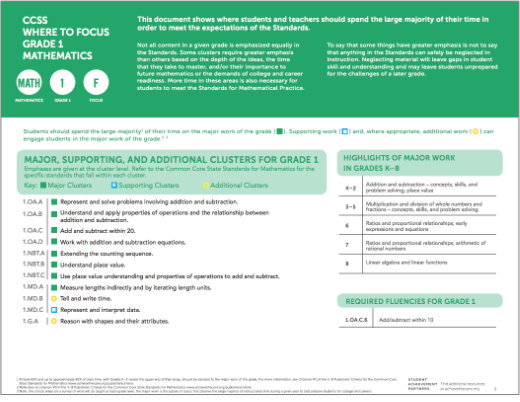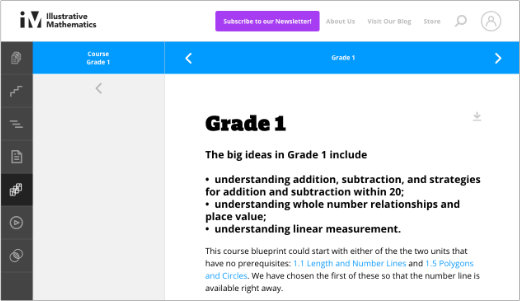Here are two resources we think will support your focus on really important content. These documents prioritize Big Ideas, and support the idea that if you spend most of your math time on foundational numeracy and number sense making, you increase your students’ depth of knowledge of essential concepts.
Content Emphases: Achieve the Core

The aim of these grade-by-grade documents is to show where students and teachers should spend the large majority of their time in order to meet the expectations of the Standards. Each document is color coded to show Major, Supporting, and Additional Content Clusters. The green Major Content Clusters are most important to students’ mathematical understanding. They are the heart of the curriculum, and the footnote describes that up to 85% of class time should be devoted to this work.
Blueprints: Illustrative Mathematics

These blueprints, separated into each grade level, can help you navigate the State Standards. (Most State Standards, national and international, coincide with the CCSSM.) Each document offers an entry point that leverages student understanding and future grade level content. For example, in grade 1, if students start with 1.1, “Length and Number Lines,” it supports the Number Line model, vital to grade 1 work, right from the get-go.
|